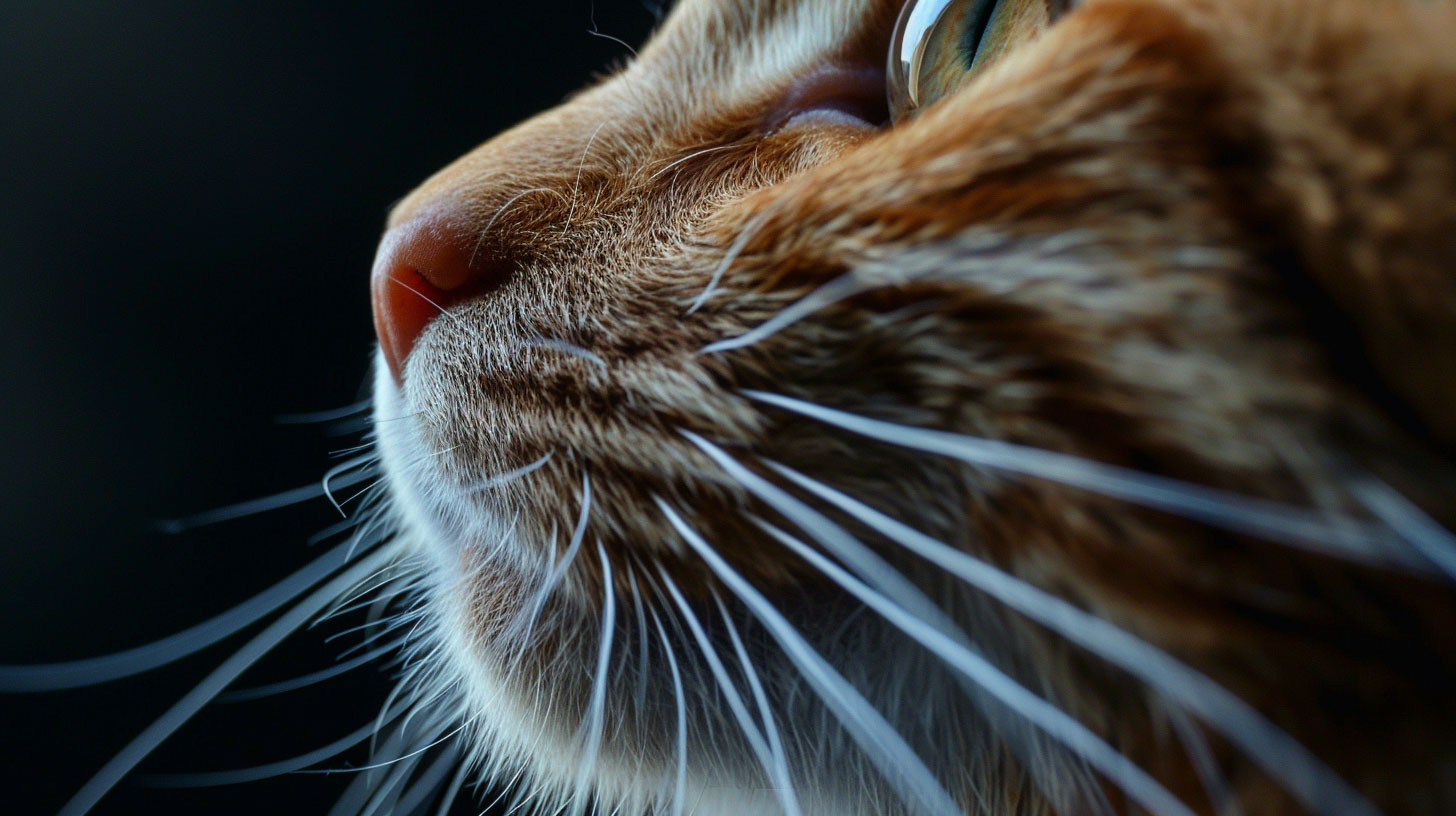Cats have mystified and enchanted humanity for centuries with their graceful movements, nocturnal habits, and mysterious behaviors. Among the countless enigmas of feline physiology, one subtle but fascinating feature is whiskers. Though they appear delicate and insignificant at first glance, whiskers (or vibrissae) play a crucial role in a cat’s survival. This article delves into the hidden world of cat whiskers, uncovering their functions, evolutionary advantages, and the science behind these extraordinary sensory tools.
The Anatomy of Whiskers
Whiskers, scientifically known as vibrissae, are not mere hairs but highly specialized sensory equipment. Unlike regular fur, whiskers are deeply embedded in the cat’s skin and are chored to nerve endings and blood vessels. These vibrissae are thicker, more rigid, and more sensitive than ordinary hairs.
Each whisker is rooted in a follicle rich in nerve endings called proprioceptors. These proprioceptors are part of the cat’s apparatus, providing real-time information about its surroundings. Whiskers are typically located in specific areas: on the muzzle, above the eyes, on the forelegs (carpal whiskers), and sometimes on the backs of the legs. This intricate anatomy allows whiskers to serve multiple sensory functions, enhancing the cat’s ability to interpret and interact with its environment.
The Functions of Whiskers

A cat’s whiskers serve various essential functions far beyond their superficial appearance. Understanding these roles highlights their critical contributions to a cat’s activities and overall well-being.
Navigation and Spatial Awareness
One of the most vital functions of whiskers is aiding in navigation and spatial awareness. Cats are known for their incredible agility and ability to move through tight spaces effortlessly. The whiskers on their muzzle act as a built-in measuring tool, allowing them to judge whether they can fit through openings. When a cat approaches a narrow passage, it extends its whiskers to gauge the width of the space, ensuring it doesn’t get lost.
Detection of Movement
Whiskers are also highly sensitive to changes in airflow and vibrations, enabling cats to detect subtle movements around them. This ability is particularly beneficial during hunting. When a cat chases prey, its whiskers can sense the slightest shift in air currents caused by the prey’s Morey’s, providing crucial information for precise pouncing. This sensitivity compensates for their slightly less effective eyesight in close ranges, making whiskers indispensable for successful hunting.
Communication and Emotional Expression
Beyond their sensory functions, whiskers also play a role in feline communication and emotional expression. Cats move their whiskers to signal their moods. Whiskers pointing forward suggest curiosity or excitement, while whiskers pulled back against the face indicate fear or aggression. They observe a cat, which can provide valuable insights into their emotional state, aiding in more effective human-feline interactions.
Evolutionary Perspective of Whiskers
The evolution of whiskers is rooted in survival and adaptation. Most mammals have evolved some form of vibrissae, but felines have refined this feature to an extraordinary degree. The development of sensitive whiskers is thought to have provided early predators with a superior detection system, giving them an edge in hunting and avoiding danger.
Survival and Predation
Ancient feline ancestors relied on their whiskers for hunting and evading predators, much like modern cats do today. In the wild, the ability to detect the slightest movements or changes in the environment can mean the difference between life and death. Whiskers allowed these early cats to become stealthy hunters, capable of navigating dense underbrush, detecting prey, and avoiding potential threats even in low-light conditions.
Adaptation to Diverse Environments
Domestic cats have inherited these evolutionary advantages. Whether navigating a cluttered room, hunting small insects, or interacting with humans, their whiskers provide critical feedback. This adaptability has allowed cats to thrive in diverse environments, from dense urban areas to rural landscapes and even semi-wild territories. Their highly sensitive whiskers make them versatile and resilient survivors in a rapidly changing world.
The Science of Whisker Fatigue
While whiskers are undeniably beneficial, there is evidence that overstimulation can lead to a phenomenon known as whisker fatigue. This condition occurs when a cat is exposed to excessive touch or pressure, leading to sensory overload.
Signs and Symptoms
Whisker fatigue can manifest in various ways, such as reluctance to eat from deep bowls, shaking the head, pawing at the face, or general irritability. In severe cases, it may lead to stress-related behaviors and reduced quality of life.
Prevention and Management
Providing cats with appropriately designed feeding and water dishes is essential to prevent whisker fatigue. Shallow, wide bowls prevent their sensitive whiskers from touching the sides. Additionally

